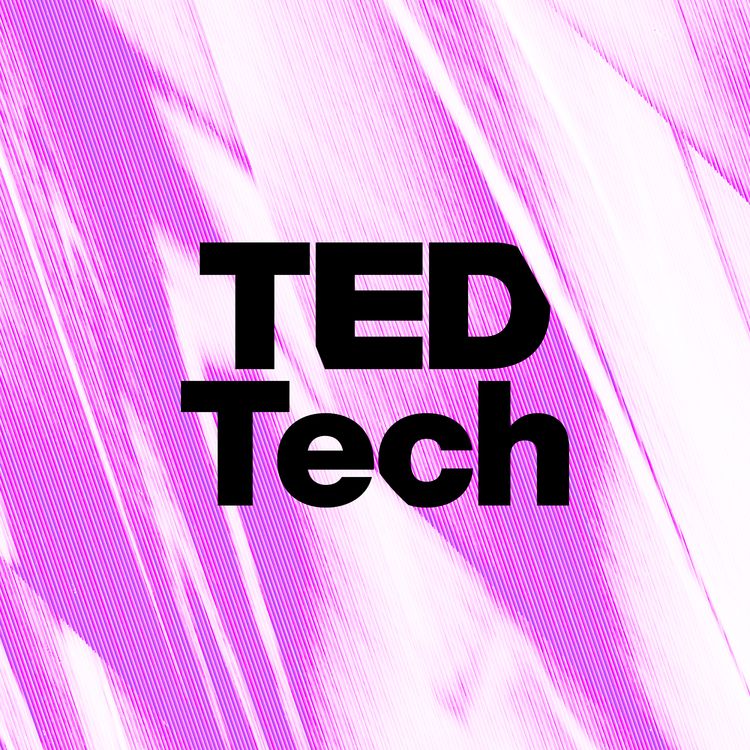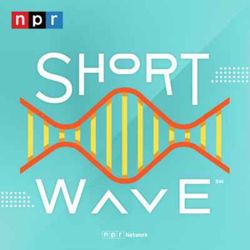Share

TED Tech
The TED AI Show: Could AI really achieve consciousness? w/ neuroscientist Anil Seth
Human brains are often described as computers — machines that are “wired” to make decisions and respond to external stimuli in a way that’s not so different from the artificial intelligence that we increasingly use each day. But the difference between our brains and the computers that drive AI is consciousness – our inner world, defined by experience and awareness. Anil Seth is a professor of cognitive and computational neuroscience at the University of Oxford. He studies human consciousness and he’s concerned about the way we’ve come to think about AI as conscious minds rather than useful tools. Anil and Bilawal sit down to discuss the differences between intelligence and consciousness, the possibility of AI becoming self-aware, and the dangers of assigning human-like traits to our AI assistants. For transcripts for The TED AI Show, visit go.ted.com/TTAIS-transcripts
More episodes
View all episodes

Dr. Joy Buolamwini | from Design Matters
01:03:29|Dr. Joy Buolamwini is a computer scientist and a poet of code who uses art and research to illuminate the social implications of artificial intelligence. She joins to discuss her career as the founder of the Algorithmic Justice League, her best-selling book Unmasking AI: My Mission to Protect What is Human in a World of Machines, and her featured role in the acclaimed Netflix documentary Coded Bias.
The multidimensional magic of modern maps | Peter Wilczynski
08:26|Maps have long helped us understand the world — now, they can help us shape it. Digital cartographer Peter Wilczynski introduces the Living Globe: a real-time, data-rich digital twin of Earth that fuses satellite imagery, sensor data and AI. Watch for a glimpse of the future of maps — and learn how these new tools can help us build the future without wrecking the planet.
Is AI ruining music? | Dustin Ballard
13:08|What makes music “real” — is it the instruments, the voice, the creator’s intention or something else entirely? Dustin Ballard, the creative force behind the viral channel “There I Ruined It,” explores the weird, wonderful and sometimes unsettling ways AI is reshaping music. With fiddle solos and AI-powered mashups of your favorite songs, he invites us to ask: Are new tools fostering creativity, or just making noise?
Tech Solutions (#4): How organizations can grow in a post-aid world (with Jacqueline Novogratz)
29:16|When the Trump administration dismantled USAID, it was the beginning of a post-aid era, says philanthropist and social entrepreneur Jacqueline Novogratz. Aid may not be coming back but in its place Jacqueline hopes creative solutions will emerge to provide independence and dignity at the community level. Jacqueline is the CEO of Acumen and has helped move over $500 million to businesses tackling poverty and climate injustice. She and Sherrell discuss how Acumen works to build newer and smarter economic models of philanthropy, the responsibilities investors have to helping organizations grow with dignity, and why projects that help local communities excite her.This is episode four of a four-part series airing this month on TED Tech, where host and climate tech journalist Sherrell Dorsey speaks with climate leaders on the technology sparking a greener, more equitable future.
Tech Solutions (#3): How one of China’s biggest tech companies is tackling carbon removal (with Xu Hao)
22:28|Tencent is one of China’s biggest tech companies, running the popular Chinese messaging app WeChat and the world’s largest video game vendor. Now, it’s also an up-and-coming force in the field of carbon removal. Xu Hao, the vice president of Sustainable Social Value at Tencent, oversees two of those initiatives: the Carbon Neutrality Lab and CarbonX. He sits down with Sherrell Dorsey, host of the “TED Tech” podcast, to talk about how megacorporation can help advance the climate movement. He also explores the current state of carbon removal technology and how Tencent’s video games are becoming an unlikely source of climate education for hundreds of thousands of people. This is episode three of a four-part series airing this month on TED Tech, where host and climate tech journalist Sherrell Dorsey speaks with climate leaders on the technology sparking a greener, more equitable future.
Tech Solutions (#2): How to balance the AI boom and environmental responsibility (with Juan M. Lavista Ferres)
18:55|The environmental impact of AI is a growing concern. In this episode, Sherrell sits down with Juan M. Lavista Ferres, the Chief Scientist and Lab Director of Microsoft’s AI for Good Research Lab, to discuss his work in using AI for conservation and sustainability. Whether it’s using AI to measure methane gas leaks or allowing AI to optimize healthcare procedures at reduced costs, Juan argues AI technology can advance conservation efforts and increase accessibility. Sherrell and Juan also discuss the paradox of AI—how to use the technology responsibly and avoid contributing more damage to the environment.This is episode two of a four-part series airing this month on TED Tech, where host and climate tech journalist Sherrell Dorsey is in conversation with TED 2025 Countdown Summit speakers on the technology that can lead to a greener and more equitable future.
Tech Solutions (#1): The affordable tech that will revolutionize farming (with Samir Ibrahim and Josephine Waweru)
23:42|When entrepreneur Samir Ibrahim asked farmers in Kenya what problem they most needed solved, the answer was simple: reliable access to water to irrigate their farms year-round. Samir is the CEO of SunCulture, a company replacing diesel- and petrol-powered water pumps with more affordable solar-powered ones. He sits down with Sherrell Dorsey, host of the “TED Tech” podcast, to discuss how he continues to innovate his product to serve smallholder farmers. Later, Sherrell chats with coffee farmer Josephine Waweru about how SunCulture’s pump revolutionized her farm and the advice she has for young people to succeed.This is episode one of a four-part series airing this month on TED Tech, where host and climate tech journalist Sherrell Dorsey speaks with climate leaders on the technology sparking a greener, more equitable future.
When AI Cannibalizes Its Data | NPR's Short Wave
14:12|Today, we’re featuring an episode from NPR’s science podcast Short Wave. In it, host Regina G. Barber talks to computer scientist Ilia Shumailov about maybe the buzziest topic around: AI. I’m sure you know AI models like OpenAI's ChatGPT are trained on millions of examples of human-written text. Nowadays, a lot of content on the Internet is written by these generative AI models. That means that AI models trained now may consume their own synthetic content and suffer the consequences. What's the harm? Find out with this episode of Short Wave.Follow NPR's Short Wave podcast on Apple Podcasts and Spotify for more episodes like this, featuring new discoveries, everyday mysteries and the science behind the headlines.Listen to every episode of Short Wave sponsor-free and support our work at NPR by signing up for Short Wave+ at plus.npr.org/shortwave.
The inside story of Notre-Dame's incredible reconstruction | Philippe Villeneuve
15:02|In a moment that stunned the world in 2019, the famed Notre-Dame in Paris went up in flames, threatening the future of the centuries-old Gothic treasure. Philippe Villeneuve, the chief architect of the cathedral’s restoration, recounts the collective effort to bring the building back to life while honoring its history. Listen for a story of craftsmanship, devotion and innovation — and learn how more than 2,000 hands worked to return this landmark to the world.